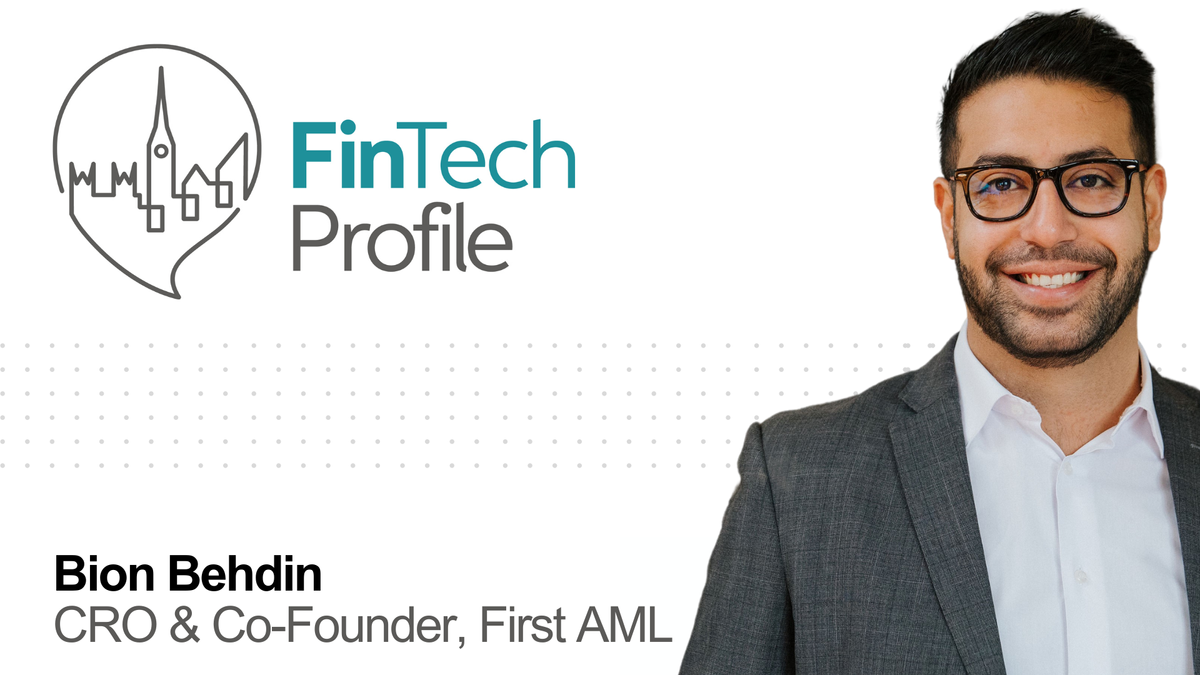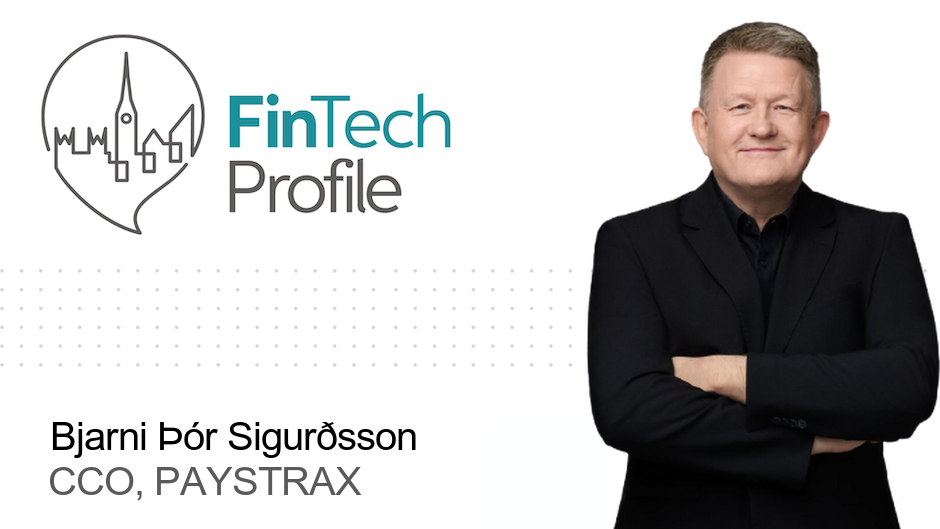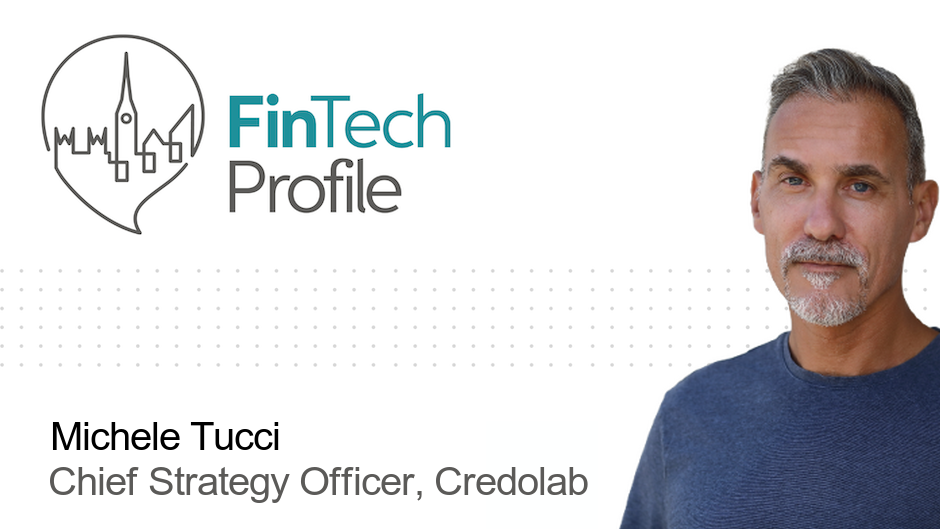Bion Behdin, CRO & Co-Founder, First AML

Today we’re interviewing Bion Behdin, Chief Revenue Officer & Co-Founder of First AML, the single AML platform powered by global data sources across 180+ countries.
Over to you Bion!
Who are you and what’s your background?
My name is Bion and I’m one of the co-founders of First AML. In a previous life, I spent the majority of my career in banking and finance, both corporate and commercial. This focused on complex property transactions, complex M&A, that sort of thing.
What we would do is we would go out and I would do a big, flashy pitch to a client. And they would say, “We love it. We want to sign up”. Then, we would try to onboard them as a customer and I would put them through the worst onboarding experience of their life. The majority of that was AML-related. That’s why we started First AML, to make complex KYC easier and more client-friendly essentially.
I went to Auckland University and did a Bachelor’s in Sociology and Classical Studies.
It wasn’t anything related to finance but then fell into an internship at a bank doing foreign exchange. I didn’t really like foreign exchange very much because the whole goal of that industry is to take margin from the client. I moved into corporate and commercial relationship management and worked my way up to a senior banking role.
When I was 29 years old, I was disenchanted with the whole thing and wanted to start a business and that’s why I started First AML.
What is your job title and what are your general responsibilities?
As well as a founder, I’m also the Chief Revenue Officer for First AML. I’m responsible for what we call the ‘front book’ here, which covers new client acquisition. I’m on hand to make sure that they have a good experience during the proposal stage and ensure they sign up with First AML. A lot of that is working really closely with our larger clients in particular, as well as with the team coming up with bespoke packages and workflows and things for understanding how our client will interact with the First AML product.
With AML and a lot of regtech businesses, the majority of work is in process development.
You’ve got to be part regulatory expert, part process design expert, and part customer experience expert. There’s a lot of moving parts when it comes to a new implementation, and you’ve got to work out a whole bunch of technology to put us in. It’s a very enterprise-like sale. As well as that, I do a lot of general founder things like raising capital.
Can you give us an overview of your business?
First AML is essentially a platform for anti-money laundering obligations and KYC.
A lot of what the industry is doing currently is providing point solutions, solving small problems and making customers build their own workflows in their various CRMs and tools. Our belief is very much that AML is a complex process more than it is a point solution technology and so a lot of the platform is around creating the best processes for a company. We integrate the best sort of point solutions and combine it all into one solution.
In terms of overview of our business, the way FinTechs have set up AML in the past has traditionally been very poor. Generally, the front-end client experience is really good, but they run into a lot of trouble with the back-end KYC infrastructure.
What they will usually do is integrate a point solution into their front end, which looks really nice, and then have that linking to a complex process in their back end, or into Salesforce or another CRM – but there’s a lot of back-end infrastructure required.
So what First AML will provide to FinTechs is all of the back-end infrastructure… as well as the shiny front end that they can connect into their application. They don’t have to build a complex workload on the back of that application to handle a significant volume of KYC information, store it, and do what’s necessary to maintain it. We do that for them.
Tell us how you are funded?
First AML raised our Series B, which was about 16 million pounds, in early 2022. We’re backed by some of the best VCs in the world, including Blackbird out of Australia, Headline Ventures out of Europe and Bedrock out of New York.
We raised a lot of money at the back end of 2021, when value actually was really high. What do you do when you get that much capital? Because a lot of companies got a lot of funding back in those days and there was a massive war for talent. Now you’re seeing the market landscape changing quite significantly. It’s now an employer’s market, which is good in some respects and bad in others.
What’s the origin story? Why did you start the company? To solve what problems?
The reason we started First AML is to help with complex customer due diligence. The landscape for simple individual verification and consumer verification is extremely saturated and it’s a race to the bottom, a commoditized type of product. One company will be selling checks for one pound, then someone else says we’ll do it for 80p.
But onboarding companies, trusts and other complex entities – there is no easy solution for that at the moment. To me, that’s still the biggest unsolved pain point; how do we help customers onboard a complex entity quickly and easily?
People might buy four or five AML products to help them solve the suite of AML problems, whether it’s ongoing monitoring by something like ComplyAdvantage or World Check, or if it’s individual verification where they get on Onfido or Jumio to do individual checks but, again, all of that’s becoming very commoditized.
Who are your target customers? What’s your revenue model?
First AML’s target customers are in the finance and law space, generally anyone who’s doing complex B2B, KYC or customer onboarding.
In terms of FinTech, it would be B2B payments companies, credit cards, customer accounts, and business banking. Those are our target customers. Similarly with the law space, it’s more in the complex end of town, so mainly corporate finance law, as well as firms like venture capital and private equity, where most of the LPs are complex entities and need a bespoke process set up for them. You can see examples of this in our recent work with Headline VC and Stride VC.
If you had a magic wand, what one thing would you change in the banking and/or FinTech sector?
Probably people’s attitude towards SaaS. I think people at these firms tend to think that they know best. But we’ve been doing this and only this for the last 7 years so we understand the workflow better than these organisations, but people still want to customise software to their needs and they end up creating these giant zombie products that basically don’t work.
I’ve seen that firsthand inside a bank and inside multiple banks. How they think about technology is just not how the rest of the world thinks about technology. That’s the number one thing I’d change by bringing more people from tech into those organisations.
I also think there’s also something to be said around sandboxing. One of our partners is a sandbox technology, so it makes it less scary for a bank to introduce new technology into the mix.
What is your message for the larger players in the Financial Services marketplace?
I’d say be open to solutions and realise that the product you’re buying is not the same product that it’s going to be in 12 months. The iteration and improvement technology provides in this space is massive; something we bought a year ago is completely transformed and continues to get better every year and much faster than the banks can probably build themselves.
Additionally, your support allows them to hire more engineers to build stuff faster. The more that these big banks actually either invest into or acquire this technology means it gets better far quicker.
Where do you get your Financial Services/FinTech industry news from?
The Financial Times is my number one source, as well as Money Laundering Bulletin and Compliance Week, which help me keep up to date with all the comings and goings.
Can you list 3 people you rate from the FinTech and/or Financial Services sector that we should be following on LinkedIn, and why?
- Laura Noonan, ex UK Financial Regulation Editor at the FT
- Christopher Dorrell, Economics Reporter at City AM
- Luke Raven, AML Commentator
What FinTech services (and/or apps) do you personally use?
I use Yonder in London a lot. It’s essentially a personal credit card for experiences in London and, as someone who likes to go out and experience the city quite a lot, the points are really good. The UI is also amazing.
I personally use it every day and it’s my primary credit card now. You simply claim the rewards on the app, the vendor doesn’t have to know anything and it’s all done automatically. That’s the number one FinTech service I use at the moment.
What’s the best new FinTech product or service you’ve seen recently?
There’s an Australian company called Primary and they do foreign exchange management and fund management for startups.
If you’ve just raised 10 million dollars but you don’t know where to put your money for the best return, Primary will help you get the best treasury return on your cash, which is really important to startups.
Finally, let’s talk predictions. What trends do you think are going to define the next few years in the FinTech sector?
I still think challenger banks are the number one thing in the FinTech sector that’s going to have massive, massive growth over the next few years. Traditional banks in the UK and abroad are not realising what’s happening because their returns aren’t affected yet.
But that’s not how banking works. Your returns get affected over a 20-year life cycle. Where the customers that challenger banks are acquiring now will stay with them for the next 20 years and as the customers of traditional banks pass away and wealth transfer is transferred to a generation that doesn’t bank with them, that’s when we’re going to see a massive impact to traditional banks’ balance sheets.
Therefore, they need to sort out the way they do customer acquisition. They need to make it easier for clients to sign up, or I guarantee that in 10 to 15 years they will see a massive erosion of their balance sheets. These challenger banks will start releasing loans and insurance products and capture the entire life cycle of their client base.
A really good example of this is CommBank in Australia. They’re the largest bank in Australia right now for one reason and one reason only. I personally attribute this to in the 80s and the 90s, CommBank released this digital piggy bank where kids could open an account and they would get a piggy bank with a digital number on it.
And as they put money in, it would tell them how much money they saved. That ended up opening something like a million kid accounts with CommBank. They’re now the largest bank in the country because they just grow and because people haven’t left and changed bank accounts.
For me, that’s the biggest trend over the next few years that we’ll see in FinTech; it’s these challenger banks who really start to trouble traditional banking and the traditional sector.
Thank you very much Bion, that was excellent!
Follow Bion on LinkedIn: Bion Behdin and visit First AML at https://www.firstaml.com/.




